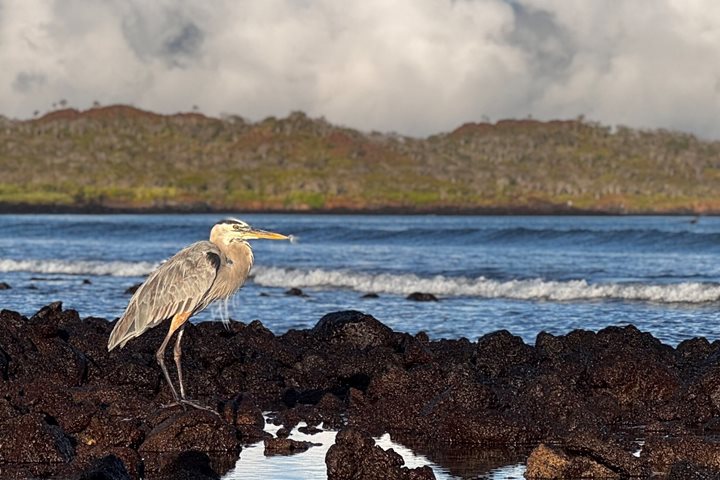Today our adventure began in the early hours of the morning. We started with a hike to the summit of Bartolomé or Bartholomew Island, which is 359 feet or 120 meters high. Unlike the other islands of the Galapagos, Bartolomé was named after a naval officer below flag-rank. Its eponym is Captain David Ewen Bartholomew who entered the Royal Navy in 1794 following his impressment from a merchant ship. He served with distinction during the Napoleonic Wars and spent the last three years of his life in command of a surveying frigate.
This tiny island shows a unique volcanic moonscape of rust-colored spatter cones, contrasting with large pale tuff cones, sooty lava flows and small collapsed lava tubes, where the action of erosion over time has created graceful features in the soft volcanic ash. From a unique biological perspective, this is one of the best examples of primary succession, where life is taking over a pristine terrine for the first time.
After breakfast, it was time to land on one of the golden sand beaches, where we had the chance to explore the surrounding waters in the search of sharks, penguins, sea lions, rays and a wide variety of fish. In the afternoon and after lunch, our younger explorers learned how to make paper beads using recycled paper, and soon they were creating their own bracelets, while adults gathered at the lounge to hear Sofia give a talk about Darwin and his visit to Galapagos.
At around 3:00 p.m., we anchored close to Sombrero Chino and the Bainbridge Islets. These interesting small volcanoes were probably formed when the sea level was lower, as parasitic cones of Santiago or James Island. Soon we dropped anchor near Chinese hat and went snorkeling off the coast of the young lava fields of Santiago island. We had an incredible time in the water, followed by a Zodiac ride around the same snorkeling area, but this time to photograph Galapagos penguins and other shore birds with the golden light of the equatorial sunset.







